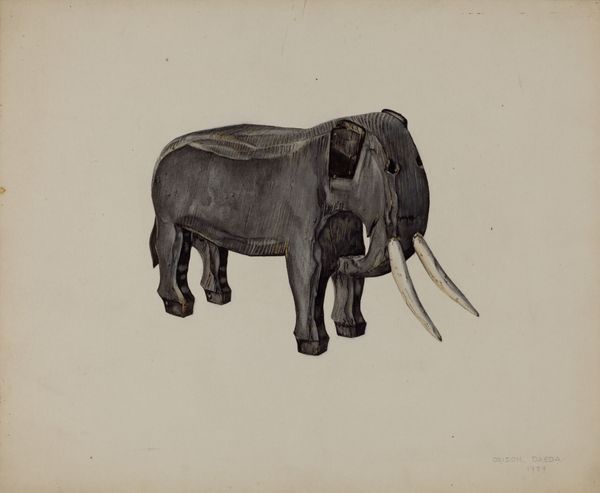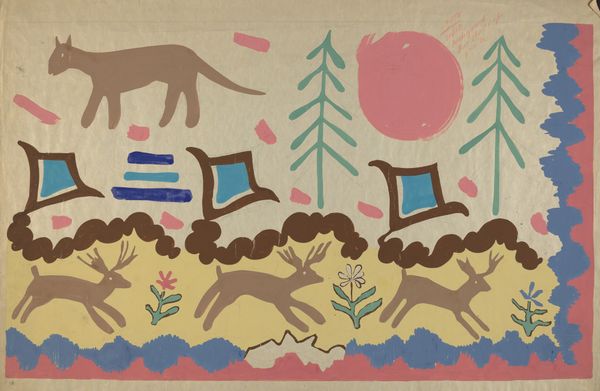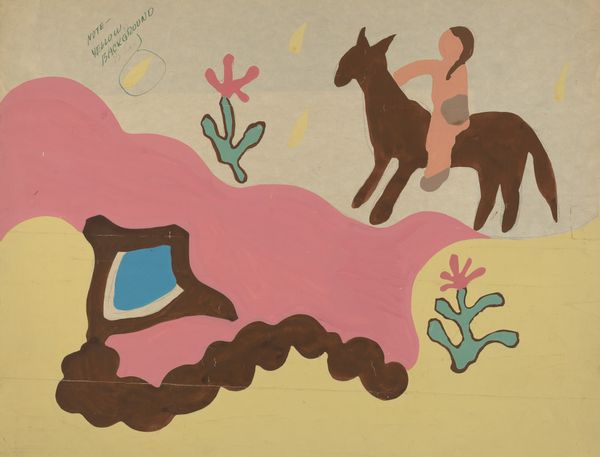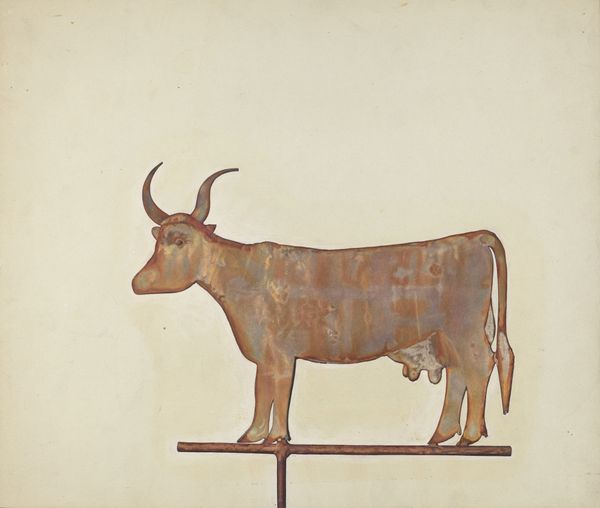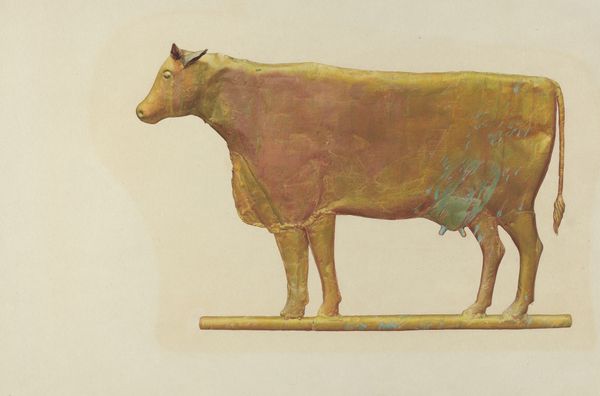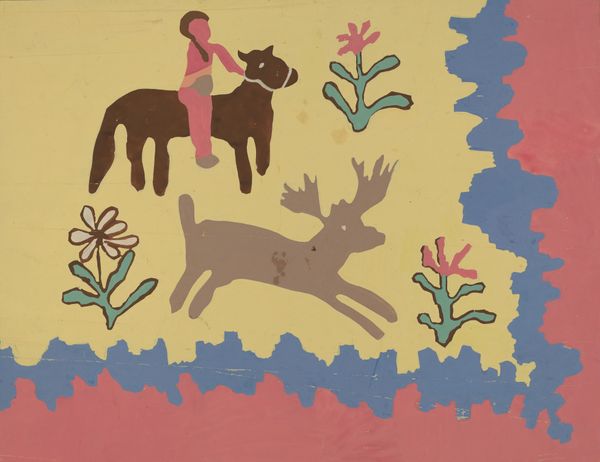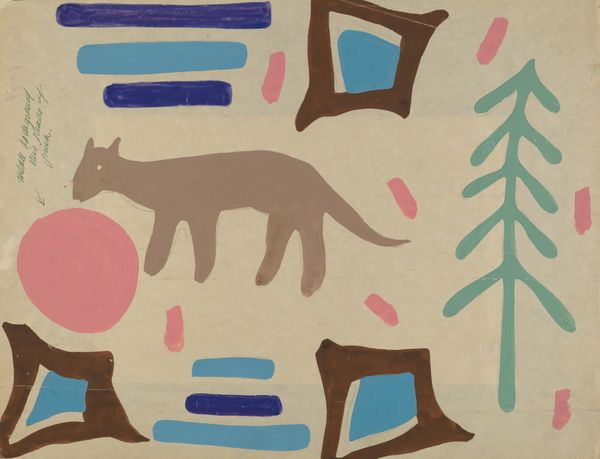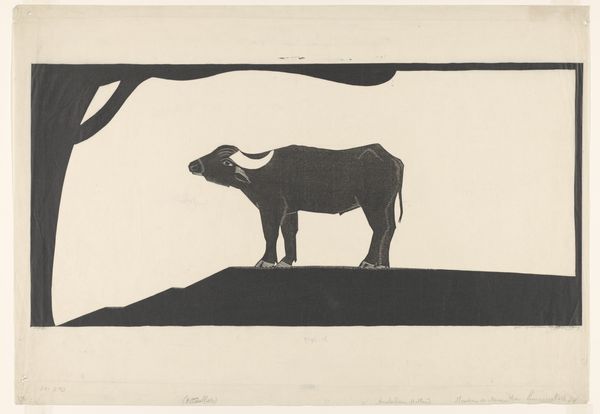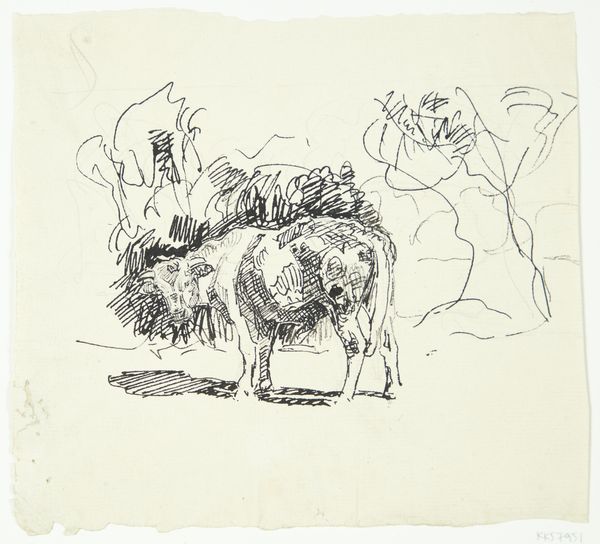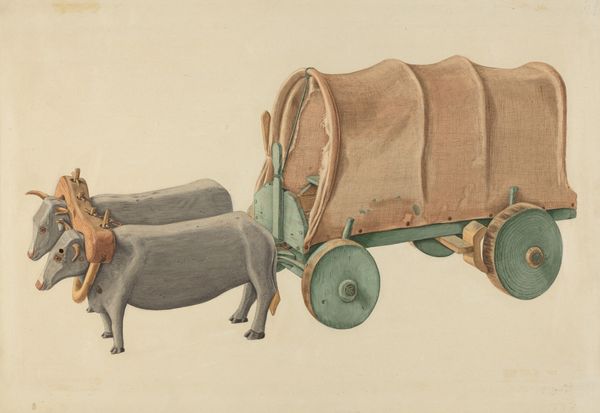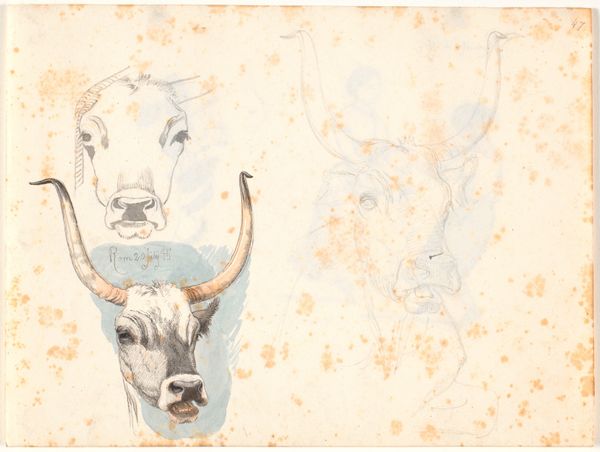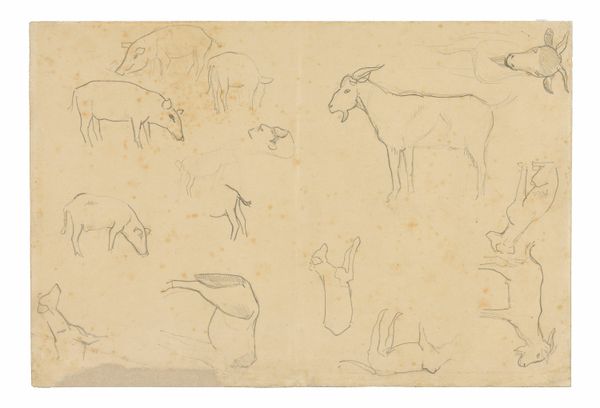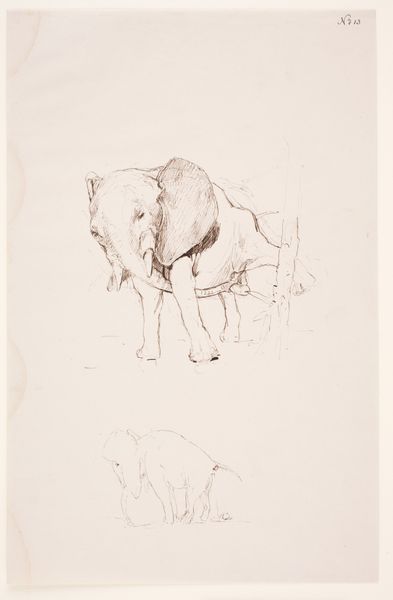
drawing, watercolor
#
drawing
#
water colours
#
landscape
#
figuration
#
watercolor
#
genre-painting
#
watercolor
Dimensions: overall: 35.4 x 45.9 cm (13 15/16 x 18 1/16 in.)
Copyright: National Gallery of Art: CC0 1.0
Curator: This watercolor drawing, titled "Colcha," dates from 1935 to 1942 and is by Majel G. Claflin. What are your first impressions? Editor: It's charmingly folksy, isn't it? I'm immediately drawn to the flat, almost childlike rendering and how deliberately simplified the forms are, especially those oxen and that stylized farmer. Curator: Claflin’s work, I believe, uses simple figuration and watercolor to illustrate genre scenes with some resonance and charm that is accessible and familiar. Editor: Right. This wasn’t about high art pretension; it's rooted in everyday experience and practical representation of labour and materiality, no? Curator: Indeed. The artist engages in rendering labour in visual and material forms; and in doing so is enmeshed in larger historical, social and ideological contexts. Also notice the repeated forms around the edges, adding a frame and lending a decorative quality—suggesting patterns for textile production perhaps. Editor: Absolutely, that repeated diamond and dot pattern certainly evoke a stitched, hand-made textile and I cannot help but to also think of it as a record of human interaction with landscape. Even in the simplicity of rendering the plowing process is captured. Curator: How the painting embodies labour through visuality; the means of agricultural life made symbolic, indeed! Editor: These materials and scenes were about depicting social context during difficult decades through making and displaying common everyday activities that offered opportunities for artistic and aesthetic experience; what's more common than working the land and its people who occupy and perform the very nature of existence, right? Curator: I think so. The social and historic aspects are apparent: both the hard work portrayed, and the hope. A historical snapshot. Editor: Exactly. Well, this work really emphasizes for me how an image, using modest materials and techniques, can offer layers of context. Curator: Agreed, it prompts a useful questioning of what matters to us, as people. Thank you!
Comments
No comments
Be the first to comment and join the conversation on the ultimate creative platform.
